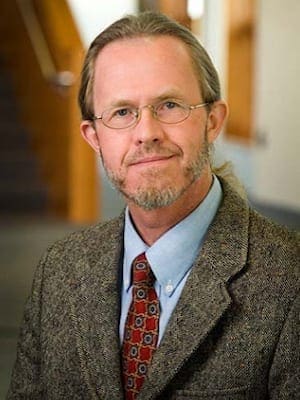What are we to think of “pushing the envelope” such that tissue or organs are surgically excised and implanted, more or less permanently, from other mammals into human bodies? Is it ethically permissible to carry around pig parts in the human heart?
This lament is heard repeatedly in the company of transplant clinicians. With the waiting list of organ recipients at 80,000 (in the United States alone) and growing, the imbalance of supply relative to demand breeds desperation.
“If only we had enough organs we could save more patients.” This is the implied conclusion of each truncated lament. As with medicine generally, transplant medicine intends to extend life and relieve suffering. Humans have exhibited amazing ingenuity toward those ends, and organ transplantation is a prime example.
We have also demonstrated a willingness to shift the boundaries of ethical norms in pursuit of more life and less suffering. “Pushing the envelope” is another repeated phrase—and activity—in transplant medicine. Illustrative of this euphemism for violating norms is xenotransplantation—cross-species body part replacement.
What are we to think of “pushing the envelope” such that tissue or organs are surgically excised and implanted, more or less permanently, from other mammals into human bodies? Is it ethically permissible to carry around pig parts in the human heart?
As a society generally, we have readily agreed to pushing the ethical envelope, despite some qualms. And today many thousands of porcine heart valves reside in human chest cavities, having been stitched into heart muscle to regulate blood flow upon the failure of original human parts. Insulin and skin grafts have long been extracted for human benefit from nonhuman animal sources.
More contentious is the potential use of whole organs from other species. Not only is this proving to be a greater challenge technically, but ethically red flags are raised at this further violation of the natural species barrier.
The 1984 “Baby Fae” case remains xenotransplantation’s most famous—some say infamous—example of both the technical and ethical challenges yet to be overcome. Loma Linda University’s Dr. Leonard Bailey transplanted a baboon’s heart into a dying infant girl. Twenty days later, “Baby Fae” died of organ failure, and the world had been alerted to the crossing of the species barrier.
Most of us were unaware that 20 years earlier surgeons at the University of Mississippi had similarly experimented with a chimpanzee’s heart, but with even less success. Intervening years had seen several additional xenotransplant attempts using the hearts, kidneys or livers of chimps, baboons, pigs and sheep.
What other ethical problems, for Christians and other moral agents, are raised by such experiments in this realm of high-tech medicine?
Many colleagues criticized Dr. Bailey for “jumping the gun” on standard research guidelines involving human subjects in clinical trials. Results of similar experiments on nonhuman subjects (primates especially) had not yielded “acceptable” results prior to transplanting a baboon heart into Baby Fae. Since then, and partially in response, FDA guidelines have been drafted for xenotransplant protocols.
The exploitation of other species constitutes another ethical problem. Is it fitting to adopt a humanocentric utilitarian ethics in this regard? Should we be raising nonhuman primates, or even pigs, for purposes of lethal experimentation or for the harvesting of organs for human benefit? Given our societal propensity for consuming bacon and sausage, only a pork abstainer is apt to raise moral objections to further swine exploitation for medical purposes.
But nonhuman primates are another matter. Basically, the more they look like us, the more hesitant we are either to eat or exploit them. Their similarities to our own psychosocial behaviors seem to warrant caution if not prohibitions against purely utilitarian approaches to other primate species.
Distributive justice is a relevant biblical concern that comes into play any time we propose expensive medical innovations with potential benefits for a relative few. Even if xenotransplantation efforts ultimately succeed, will they have been ethically warranted given that fewer dollars expended on basic health care for the poor might have saved considerably more lives?
An immunological challenge, which becomes ethical also, arises in xenotransplantation due to our bodies’ rejection of foreign material. The more foreign it is, the more vigorously we fight it off. While every organ recipient requires immunosuppression therapy, those receiving cross-species organs likely face a more severe course of treatment. Infections become more likely then as well. Interventions ironically may increase rather than relieve suffering.
Researchers, like Dr. Richard “Robin” Pierson at Vanderbilt, have tried to thwart this natural immune response by genetically altering laboratory animals. Introducing human genetic material into the swine genome, Dr. Pierson and colleagues hope to fool the human recipient body thereby lessening the cross-species immune rejection response. But this sort of genetic engineering represents another cross-species pushing of the envelope. Is it fitting to do so?
The most widely agreed upon and unrelenting ethical issue in xenotransplantation has to do with the potential for introducing harmful viruses, bacteria or fungi into the human population. Virologists speculate that the origin of human HIV lies in a cross-species transmission of simian immunodeficiency virus from African monkeys.
Might even “sterile” laboratory animals be virally “unclean”? Do their organs carry organisms which, though harmless to their species, could devastate our own via xenotransplantation? Researchers admit to that possibility while working to mitigate it.
“If only we had enough organs …” But since we do not, xenotransplant research cautiously persists, “pushing the envelope” and causing us worry while raising our hopes.
Tarris D. Rosell is associate professor of pastoral care and practice of ministry at Central Baptist Theological Seminary in Kansas City, Kan.

